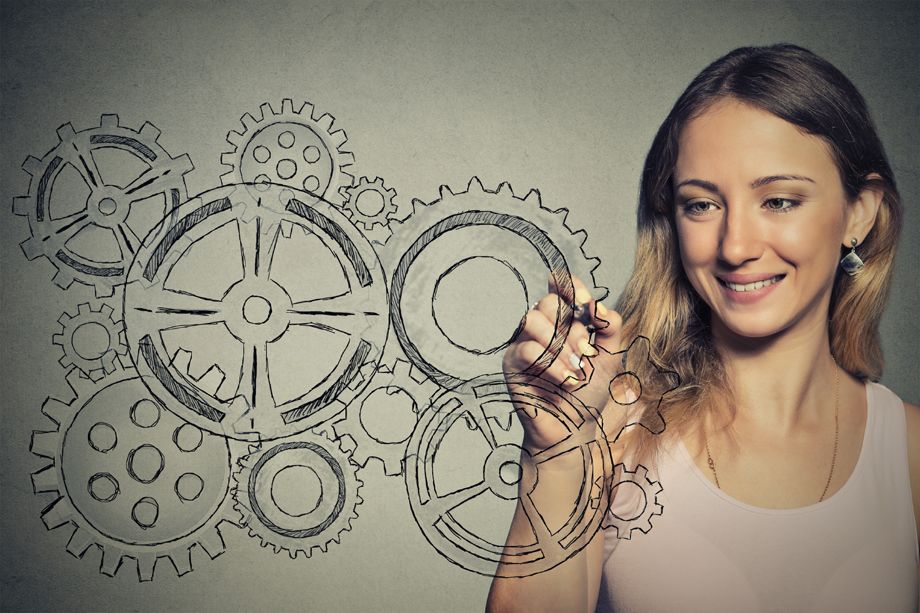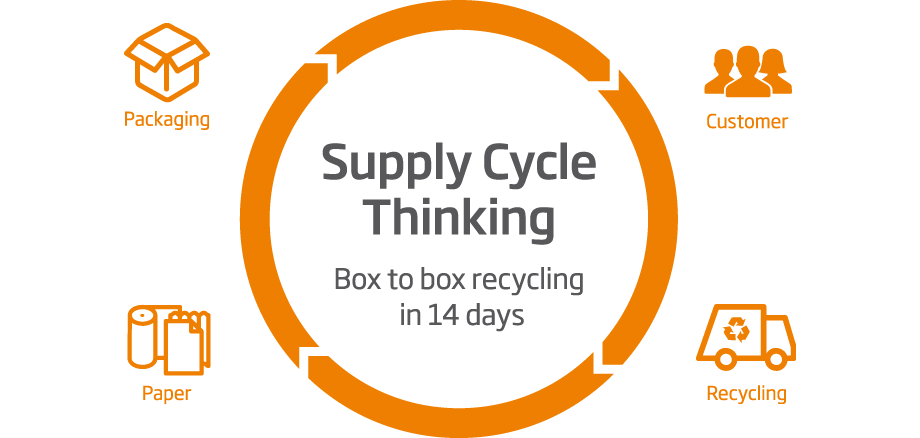Why Zero Waste needs to be so much more than just Zero Landfill

What is zero waste?
Let’s be clear: zero waste is different from ‘zero waste to landfill’. ‘Zero waste to landfill’ can be overly reliant replacing landfill with waste-to-energy. No – zero waste is a philosophy that goes right to the top of the waste hierarchy, encouraging the redesign of products and packaging to ensure that resources are kept in use for as long as possible. This means that recyclable materials don’t end up in landfills or incinerators , but are designed to become resources once again.

Zero waste is also about focusing on production and distribution systems – the whole integrated process rather than individual elements of it – and a movement from linear to more circular supply cycles. The emphasis is on preventing waste in the first place, rather than thinking about how to deal with it once it has already been generated.
Zero waste is central to DS Smith’s business philosophy. It’s a process of
- implementing better systems,
- changing people’s behaviour, and
- ensuring that resources remain productive in the economy for longer.
- We look to design out any waste from our packaging solutions, while our recycling solutions ensure that 100% of collected resources are turned back into something useful.
For us, zero waste means avoiding landfill at all costs. Instead, we invest in innovative business processes that help customers achieve more with less. As a recycler, we are aware of the role that waste-to-energy has to play in waste management systems: the recovery of energy from materials that are not suitable for recycling. The problem of ‘zero waste to landfill’ comes when we rely on waste-to-energy as the default outlet for materials that could otherwise be reused or recycled.
Zero waste solutions
The zero waste challenge is about getting people to think about the true cost of their waste management.
The waste hierarchy is a model that shows people how to handle their waste in the most appropriate way – and it’s a useful demonstration of how people can achieve zero waste. In order of priority, the waste hierarchy suggests
- Reduction
- Reuse
- Recycling
- Recovery
- Disposal
‘Recovery’ is waste to energy processes, and along with disposal to landfill, should only be considered when the other options have been exhausted.
The idea is to prevent waste from slipping too far down the hierarchy by designing it out at source. For example, over the last few years the packaging design for some Easter eggs has changed dramatically. Instead of coming in big boxes two or three times the size of the actual egg, they come in minimal packaging, with the excess material stripped away. We need more of this approach.

Designing things for reuse is next on the waste hierarchy. When people buy a washing machine, they own the drum, the electrics, the precious metals in the circuit boards, the concrete block at the base. When the machine gets to the end of its life, it will be taken to a recycling centre where it will be broken down and all those components crushed up and recycled. A simple change would be for the manufacturer to design replaceable components so that the product can be reused for as long as possible, so that using up materials doesn’t mean generating waste.
Next is recycling. This is where we at DS Smith try to drive as much value as possible, so we look at materials as a resource, not waste . So the paper and card we collect is sent to our paper mills for reprocessing; paper is then sent to our packaging facilities to create new cardboard boxes. This closed loop – taking discarded materials, reprocessing them and putting them back into the economy – takes just 14 days, and ensures that materials continue to generate value.

Quality in quantity
The business of recycling needs to be focused on quality. We need to make it easier for businesses and consumers to recycle as much as possible – but we also need to work with the reality that recycling companies, like any other manufacturer, need quality raw materials. It’s a simple fact that low-quality recyclate won’t produce good products, and therefore risks being ‘recovered’ as energy – or event sent to landfill. That’s not in the spirit of zero waste.
Recovery comes below recycling on the hierarchy. This is for materials that can’t be recycled, but can produce some kind of energy. It captures energy from burning the materials, or from ‘anaerobic digestion’, where food waste and organic materials are turned into energy and compost. These should be the only uses for recovery: it’s definitely not for materials that can be reused or recycled.
The disposal of waste via landfill is right at the bottom of the waste hierarchy, because very little actually needs to go into landfill. That’s why zero waste is much more than just diverting waste from landfill. If we design differently, and reuse more, we can create a zero waste society where people really understand the value of materials, save money, and save the environment as well.